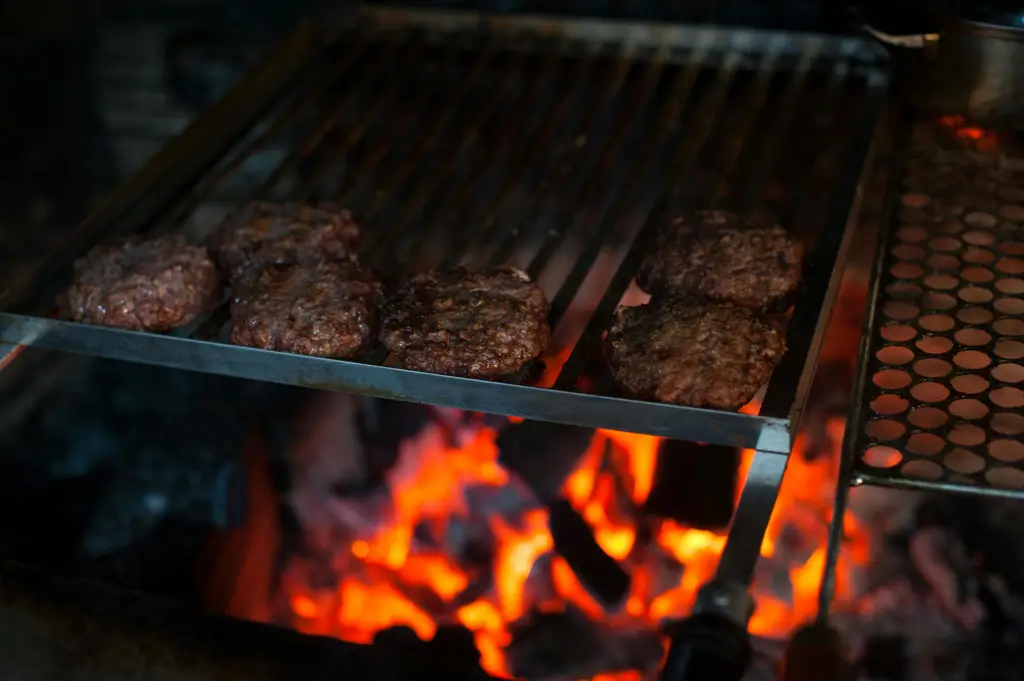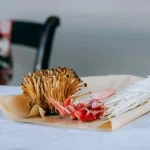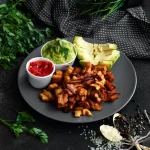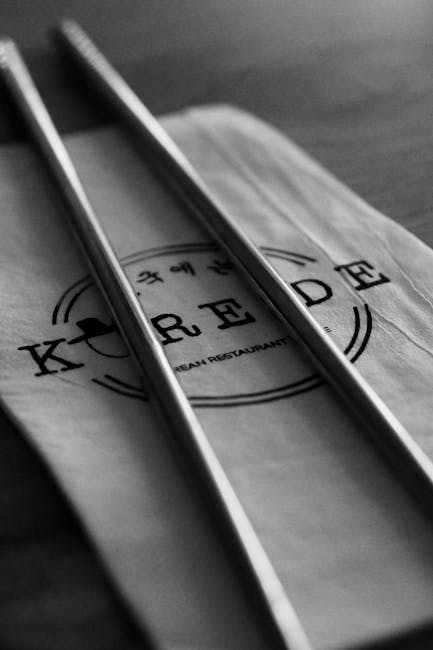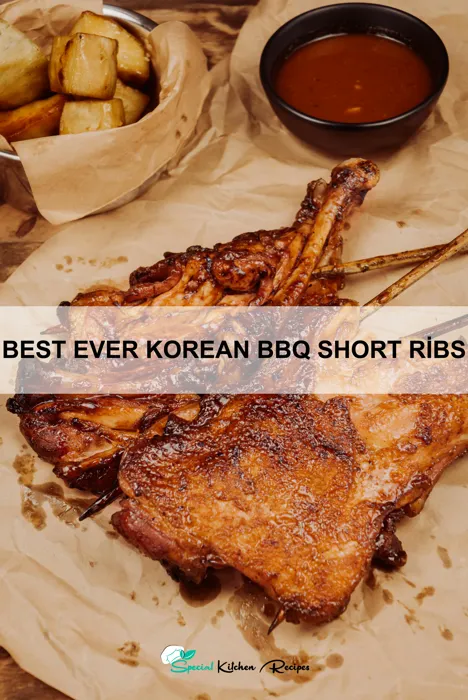Korean BBQ, or Bulgogi as it’s known in Korea, isn’t just a meal; it’s a cultural experience. Its origins are deeply rooted in Korean history, evolving from simple grilling methods used centuries ago to the sophisticated culinary tradition we know today. While pinpointing an exact origin date is difficult, evidence suggests that grilling meats over an open fire has been a part of Korean cuisine for at least several hundred years. Early forms likely involved marinating thinly sliced beef in soy sauce, garlic, and ginger – ingredients readily available and fundamental to Korean cooking. The method itself reflects the practicality and resourcefulness of Korean culture, utilizing readily available ingredients and simple techniques to create a delicious and satisfying meal.
The modern version of Korean BBQ, with its vibrant social aspect and diverse marinade options, gained significant popularity in the latter half of the 20th century. The post-Korean War period saw a rise in readily available beef, fueling the growth of Bulgogi‘s popularity. The thin slicing of the meat, a key characteristic, is believed to have been influenced by Japanese culinary techniques introduced during the Japanese colonial period, allowing for quicker cooking and even distribution of marinade flavors. Today, Korean BBQ is not just a national dish; it’s a global phenomenon, enjoyed in countless restaurants and homes across the world. In fact, the global Korean BBQ market is estimated to be worth billions of dollars, showcasing its widespread appeal and enduring popularity.
Beyond its delicious flavors, Korean BBQ holds significant cultural importance. It’s a social activity, often enjoyed with family and friends, fostering a sense of community and shared experience. The act of grilling and sharing the food together strengthens bonds and creates lasting memories. The meal itself is rarely a solitary affair; it’s a communal event where conversation flows as freely as the soju (Korean rice wine). Furthermore, the choice of cuts of beef, from the prized rib-eye to the more affordable brisket, can reflect social standing or personal preference, adding another layer of cultural nuance. The various side dishes (banchan) accompanying the BBQ, a crucial part of the experience, further highlight the depth and complexity of Korean cuisine and its emphasis on balance and harmony of flavors.
This recipe will guide you through making authentic Korean BBQ beef, allowing you to experience the rich flavors and cultural significance firsthand. Whether you’re a seasoned cook or a culinary novice, you’ll be able to create a delicious and memorable meal, capturing the essence of this beloved Korean tradition. Get ready to explore the exciting world of Bulgogi and discover why it continues to captivate taste buds worldwide. Prepare for a truly delightful culinary journey!
Ingredients and Measurements
The success of your Korean BBQ beef hinges on the quality of your ingredients and the precision of your measurements. Don’t skimp on the good stuff – the flavor payoff is significant.
For this recipe, we’ll be using approximately 1.5 lbs (680g) of thinly sliced beef. Ideally, you want a cut that’s naturally tender and marbled with fat, such as ribeye, sirloin, or even short ribs (though short ribs require slightly longer marinating time). Avoid tough cuts like chuck roast, as they won’t tenderize effectively in the marinade. Ask your butcher to slice the beef thinly against the grain; this is crucial for achieving that melt-in-your-mouth texture.
Now, let’s move on to the marinade, the heart and soul of this dish. We’ll need the following:
- 1/2 cup (120ml) soy sauce: Use a good quality soy sauce for the best flavor. Korean soy sauce (ganjang) is preferred for its slightly sweeter and umami-rich profile.
- 1/4 cup (60ml) pear juice: Freshly squeezed pear juice adds incredible sweetness and tenderness. If you can’t find fresh pears, you can use store-bought pear juice, but ensure it’s 100% pear juice with no added sugars.
- 2 tablespoons (30ml) brown sugar: This balances the saltiness of the soy sauce and adds depth of flavor. Dark brown sugar is recommended for its richer molasses notes.
- 2 tablespoons (30ml) sesame oil: Provides a nutty aroma and richness. Toasted sesame oil will enhance the flavor even further, but use it sparingly as it has a strong taste.
- 1 tablespoon (15ml) minced garlic: Freshly minced garlic is best. Pre-minced garlic from a jar can be used in a pinch, but the flavor won’t be as vibrant.
- 1 tablespoon (15ml) minced ginger: Similar to garlic, fresh ginger is ideal. Use a microplane or fine grater for a smoother paste.
- 1 tablespoon (15g) gochujang (Korean chili paste): This adds a beautiful spicy kick and a rich, fermented flavor. Adjust the amount according to your spice preference. Start with less and add more gradually.
- 1 teaspoon (5ml) black pepper: Freshly ground black pepper is always preferred.
- 1 teaspoon (5ml) sesame seeds (optional): Toasted sesame seeds sprinkled on top add a nice textural element and visual appeal.
- 1 green onion, thinly sliced (optional): For garnish.
Precise measurements are key to achieving the perfect balance of flavors. Use a kitchen scale for the most accurate results, especially for the beef and the marinade ingredients. A measuring cup and spoons are also helpful for liquid and dry ingredients.
Remember to adjust the quantities based on your personal preferences and the amount of beef you’re using. If you’re making a larger batch, simply multiply the ingredients proportionally. Enjoy the process and savor the delicious results!
Preparation of the Marinade
The marinade is the heart and soul of delicious Korean BBQ beef. A well-balanced marinade tenderizes the meat, infuses it with incredible flavor, and creates a beautiful glossy finish. This recipe yields enough marinade for approximately 2 lbs (900g) of thinly sliced beef, but you can easily adjust the quantities proportionally for larger or smaller batches.
Ingredients:
- 1/2 cup (120ml) soy sauce (preferably low sodium)
- 1/4 cup (60ml) pear juice (freshly squeezed is best, but bottled works too)
- 2 tablespoons brown sugar (packed)
- 2 tablespoons sesame oil
- 1 tablespoon minced garlic (about 4-5 cloves)
- 1 tablespoon minced ginger (about 1 inch piece)
- 1 tablespoon Korean chili flakes (gochugaru), or to taste. Adjust for desired spice level. Start with less and add more gradually, as gochugaru can be quite potent.
- 1 teaspoon black pepper
- 1/2 teaspoon sesame seeds (optional, for added flavor and visual appeal)
Instructions:
Begin by preparing your pear juice. If using a fresh pear, peel, core, and juice it using a juicer or by finely grating it and straining the pulp. Freshly squeezed pear juice provides a superior sweetness and depth of flavor compared to bottled juice. If using bottled pear nectar, be sure to select a variety without added sugars.
In a medium-sized bowl, whisk together the soy sauce, pear juice, and brown sugar until the sugar is completely dissolved. Ensure the sugar dissolves fully to prevent gritty texture in the marinade.
Next, add the sesame oil, minced garlic, minced ginger, gochugaru (Korean chili flakes), and black pepper. Whisk vigorously to combine all the ingredients thoroughly. The more you whisk, the better the emulsion will be, ensuring even flavor distribution throughout the marinade.
Finally, stir in the sesame seeds (if using). Taste the marinade and adjust the seasoning as needed. You might want to add more brown sugar for sweetness, gochugaru for heat, or soy sauce for saltiness, depending on your preference. Remember that the flavors will mellow slightly as the beef marinates.
Once you’re happy with the flavor profile, your marinade is ready to use! Transfer it to a resealable bag or a shallow dish, add your thinly sliced beef, and ensure the meat is fully coated in the marinade. For optimal flavor penetration, marinate the beef for at least 30 minutes, but ideally for 2-4 hours in the refrigerator. Marinating overnight is also perfectly acceptable, provided you store it properly in an airtight container.
Preparing the Beef
Choosing the right cut of beef is paramount for a successful Korean BBQ experience. Thinly sliced beef is key. The best cuts are those that are naturally tender and marinate well, allowing for quick cooking on the grill. Popular choices include thinly sliced ribeye (also known as chadolbagi), sirloin (buche), or brisket (galbi). Avoid tough cuts like chuck roast, as these require longer cooking times unsuitable for the quick grilling method of Korean BBQ.
For this recipe, we’ll assume you’ve purchased approximately 1 pound (450g) of thinly sliced beef. If your butcher hasn’t already sliced it thinly, you can ask them to do so, or you can attempt it at home using a very sharp knife and a freezing technique. Freezing the beef for about 30 minutes before slicing helps to firm it up, making it easier to achieve consistently thin slices. This prevents tearing and ensures even cooking.
Once you have your thinly sliced beef, it’s crucial to remove any excess fat or silver skin. While some fat adds flavor, excessive fat can cause flare-ups on the grill and make the meat greasy. Use kitchen shears or a sharp knife to carefully trim away these unwanted parts. Be mindful not to remove too much, as some fat contributes to the overall flavor and tenderness.
Now, let’s address the issue of potential toughness. Even with tender cuts, improper handling can result in tough meat. Avoid repeatedly handling or manipulating the beef slices once they are cut. This can cause the muscle fibers to break down, leading to a less tender final product. Gently place the sliced beef in a shallow dish or container for marinating.
Finally, before marinating, consider the size and thickness of your beef slices. Consistency is key for even cooking. If some slices are significantly thicker than others, try to achieve more uniformity by gently stretching or slightly thinning the thicker pieces. This will ensure all pieces cook evenly, preventing some from becoming overcooked while others remain undercooked. Aim for slices that are approximately 1/8th to 1/4 inch (3-6mm) thick. This ensures quick cooking and a tender, juicy result. Remember, patience and attention to detail during this preparation stage will significantly enhance the quality of your Korean BBQ.
With your beef properly prepared – thinly sliced, trimmed, and uniformly sized – you’re ready to move on to the exciting step of marinating!
Cooking the Beef (Grilling/Pan-frying)
This section details how to cook your marinated Korean BBQ beef, offering both grilling and pan-frying methods. Choose the method that best suits your equipment and preference. Regardless of your chosen method, ensure your beef is brought to room temperature before cooking for even cooking and optimal browning.
Grilling Method: For the most authentic Korean BBQ experience, grilling is the preferred method. Preheat your grill to medium-high heat (approximately 375-400°F or 190-200°C). Lightly oil the grates to prevent sticking. For approximately 1 pound of thinly sliced beef, you’ll need a grilling surface of at least 12×12 inches.
Place the marinated beef slices onto the hot grill, avoiding overcrowding. Overcrowding will lower the temperature and result in steaming rather than grilling. Work in batches if necessary. Grill for 1-2 minutes per side, or until the beef is cooked to your desired doneness. Thinly sliced beef cooks very quickly. Look for a beautiful char and a rich brown color. Do not press down on the beef while grilling; this will squeeze out the juices and result in dry meat.
Using tongs, gently flip the beef using a gentle and swift motion to prevent tearing. Once cooked, remove the beef from the grill and immediately transfer it to a serving platter. Keep the cooked beef warm while you cook the remaining batches. You can loosely tent the platter with foil to retain heat.
Pan-frying Method: If you don’t have access to a grill, pan-frying is a great alternative. Heat a large skillet or cast iron pan over medium-high heat. Add 1-2 tablespoons of high-smoke-point oil, such as canola or grapeseed oil, to the pan. Once the oil shimmers, add the marinated beef in a single layer, avoiding overcrowding. Again, overcrowding will lead to steaming instead of browning.
Cook the beef for approximately 1-2 minutes per side, or until cooked to your liking. Use tongs to gently flip the beef, ensuring even browning on both sides. The key is to achieve a nice sear without overcooking the delicate meat. For 1 pound of thinly sliced beef, you may need to cook in two or three batches.
Once cooked, remove the beef from the pan and transfer it to a serving platter. Keep the cooked beef warm until all batches are finished. Avoid overcooking the beef as this will result in tough and dry meat. The internal temperature should reach 145°F (63°C) for medium-rare.
Regardless of the cooking method, always taste test a piece before serving the entire batch to ensure the seasoning is to your liking. You can always adjust the seasoning of the remaining beef if needed.
Serve your perfectly cooked Korean BBQ beef immediately with your favorite sides and accompaniments, such as lettuce wraps, kimchi, rice, and various sauces. Enjoy!
Serving Suggestions (including side dishes)
Korean BBQ is all about the experience, and the right accompaniments elevate the meal from delicious to unforgettable. Your perfectly marinated and grilled Korean BBQ beef deserves a stellar supporting cast of side dishes, known as banchan. While the possibilities are endless, we recommend a balanced selection of flavors and textures to complement the rich, savory beef.
For a classic Korean BBQ spread, consider these quantities for 4 servings:
1. Steamed White Rice (밥, bap): 4 cups cooked short-grain white rice. This is the essential base for soaking up the delicious BBQ juices. Serve it hot, fluffy, and in individual bowls.
2. Kimchi (김치): 1 cup of your favorite kimchi. The spicy, fermented cabbage adds a vital contrasting flavor and texture to the rich beef. Choose a variety that suits your spice preference, from milder cucumber kimchi to fiery napa cabbage kimchi. Important: Ensure the kimchi is at room temperature for optimal flavor.
3. Sesame Spinach (시금치나물, sigumchina mul): 1 cup. Blanched spinach seasoned with sesame oil, garlic, and a touch of salt provides a refreshing, slightly bitter counterpoint to the richness of the beef. The sesame oil adds a lovely nutty aroma.
4. Pickled Radishes (무생채, museongchae): 1 cup. These quick-pickled daikon radishes offer a crunchy, subtly sweet and sour element that cuts through the richness of the meat. The vibrant color also adds visual appeal to your table setting.
5. Bean Sprouts (콩나물무침, kongnamul muchim): 1 cup. Lightly seasoned bean sprouts provide a light and refreshing contrast. They offer a delicate crunch and a slightly sweet flavor profile.
6. Japchae (잡채): (Optional, but highly recommended for a more substantial meal) 2 cups. This glass noodle stir-fry with vegetables and meat is a popular Korean side dish that adds depth and variety to your spread. It’s delicious both hot and at room temperature.
Serving Suggestions:
Presentation is key: Arrange your side dishes attractively on a table or in individual serving bowls. This allows guests to easily create their own personalized combinations. Consider using small, colorful bowls to enhance the visual appeal.
Interactive dining: Korean BBQ is best enjoyed as a communal experience. Encourage your guests to assemble their own wraps using lettuce leaves, rice, kimchi, and slices of the grilled beef. This interactive element adds to the fun and enjoyment of the meal.
Don’t forget the sauces: Offer a variety of sauces like ssamjang (fermented soybean paste), gochujang (Korean chili paste), and soy sauce for dipping. These sauces add extra layers of flavor and cater to different taste preferences.
Drinks: Korean BBQ pairs well with both alcoholic and non-alcoholic beverages. Soju, makgeolli (Korean rice wine), and beer are popular choices. Alternatively, iced tea or sparkling water provide refreshing non-alcoholic options.
Tips and Tricks for Perfect Korean BBQ Beef
Achieving perfectly cooked and flavorful Korean BBQ beef hinges on several key factors. This section outlines essential tips and tricks to elevate your grilling game and guarantee a memorable culinary experience.
Choosing the Right Cut: The success of your Korean BBQ starts with selecting the appropriate beef cut. Thinly sliced beef, such as ribeye, sirloin, or bulgogi-grade short ribs, are ideal. Avoid cuts that are too thick, as they won’t cook evenly on the grill. Aim for slices about 1/8 inch to 1/4 inch thick. If your butcher doesn’t offer pre-sliced bulgogi, ask them to thinly slice your chosen cut for you.
Marination Magic: The marinade is the heart and soul of Korean BBQ. A typical marinade might include 1/4 cup soy sauce, 2 tablespoons brown sugar, 1 tablespoon sesame oil, 1 tablespoon minced garlic, 1 tablespoon minced ginger, 1 teaspoon black pepper, and 1/2 teaspoon red pepper flakes (gochugaru). Adjust the amount of gochugaru to control the spice level. For a sweeter marinade, add a tablespoon of pear juice or honey. Marinate the beef for at least 30 minutes, and ideally, for 2-4 hours in the refrigerator. Longer marinating times allow the flavors to penetrate deeply, resulting in more tender and flavorful meat.
Grilling to Perfection: Use a well-seasoned grill pan or a grill with medium-high heat. Avoid overcrowding the grill; this will lower the temperature and lead to steaming instead of grilling. Cook the beef in small batches, ensuring each slice gets a nice sear on both sides. Grilling time depends on the thickness of the meat and the heat of the grill, but generally, it takes 1-2 minutes per side for thinly sliced beef. Look for a beautiful brown color and ensure the beef is cooked to your desired level of doneness. Don’t overcook the beef, as this will make it tough and dry.
Temperature Control: Maintaining consistent grill temperature is crucial. Use a thermometer to monitor the heat, aiming for around 350-400°F (175-200°C). If the grill is too hot, the beef will burn before it cooks through. If it’s too cool, the beef will steam and become tough. Adjust the heat as needed.
Resting is Key: Once cooked, allow the beef to rest for a few minutes before serving. This allows the juices to redistribute, resulting in a more tender and flavorful final product. Serve immediately with your favorite Korean BBQ accompaniments, such as lettuce wraps, kimchi, ssamjang (fermented soybean paste), and various banchan (side dishes).
Troubleshooting: If your beef is tough after grilling, it’s likely due to overcooking or using a thick cut. Next time, choose a thinner cut and cook it for a shorter period. If the marinade is too salty, reduce the amount of soy sauce next time. Experiment with different flavor combinations and find your perfect balance of sweet, savory, and spicy.
Beyond the Basics: Consider adding other flavorful ingredients to your marinade, such as sesame seeds, finely chopped scallions, or even a splash of rice wine. Don’t be afraid to get creative and explore different flavor profiles to find your perfect Korean BBQ beef recipe.
Recommendations for Your Delicious Korean BBQ Beef
To elevate your Korean BBQ Beef experience, consider these recommendations for preparation, serving, and storage. Remember, the quality of your ingredients directly impacts the final flavor profile. Opt for high-quality beef cuts like ribeye, sirloin, or bulgogi-grade short ribs for the best results. Marinate the beef for at least 30 minutes, but ideally for several hours or even overnight in the refrigerator for maximum flavor penetration. This allows the meat to absorb the marinade’s complex flavors and become incredibly tender.
Serving Suggestions: The versatility of Korean BBQ Beef allows for many delicious serving options. Traditionally, thinly sliced beef is grilled at the table and enjoyed immediately. However, you can also pan-fry, broil, or even bake the beef for a different texture and experience. Serve the cooked beef with various accompaniments like fresh lettuce leaves for wrapping, kimchi for a spicy kick, and a variety of banchan (Korean side dishes). Don’t forget the essential ssamjang (fermented soybean paste) for dipping! Its savory and slightly spicy flavor adds a depth that perfectly complements the grilled beef.
Complementary Dishes: To create a complete and balanced Korean BBQ meal, consider serving your Korean BBQ Beef with a selection of traditional side dishes. These could include japchae (glass noodles with vegetables and meat), kimchi jjigae (kimchi stew), or bibimbap (mixed rice with vegetables and meat). For a lighter option, a refreshing cucumber salad or seasoned spinach would be excellent additions. These side dishes provide a variety of textures and flavors that complement the richness of the beef.
Storage: Properly storing your leftover Korean BBQ beef is crucial for maintaining its quality and safety. Allow the beef to cool completely before storing it in an airtight container in the refrigerator. It should remain fresh for up to 3-4 days. For longer storage, you can freeze the cooked beef in airtight freezer bags for up to 2-3 months. Remember to thaw it completely in the refrigerator before reheating.
Nutritional Information (per 100g serving, approximate values will vary based on cut and marinade): The nutritional content of Korean BBQ beef can vary significantly depending on the cut of beef and the ingredients used in the marinade. However, a typical serving might contain approximately 200-250 calories, 20-25g of protein, 10-15g of fat, and minimal carbohydrates. The exact values will depend on the specific recipe and the quantity of marinade used. It’s always advisable to calculate the precise nutritional information based on your specific ingredients and quantities.
Important Note: These are approximate values. For precise nutritional information, consider using a nutrition calculator website and inputting the specific ingredients and quantities used in your recipe.

